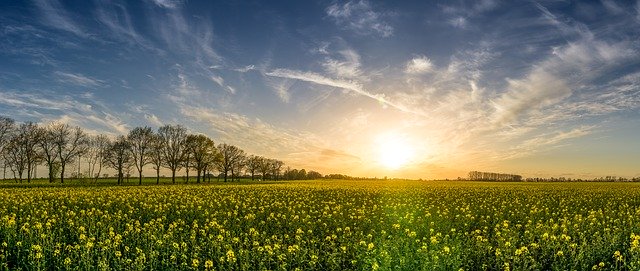In a not so distant past, the word Kratom was largely unknown to the citizens of United States. Their European counterparts were much more aware of it. Since the commencement of 16th and 17th centuries when large flotillas, which served the military purposes mainly but almost always had botanical, biological, and other scientific researchers onboard, visited and subsequently colonized the Southeast Asian regions. Those merchants and colonizers brought back with them an amazing powder, extracted from leaves of a certain tree, which was known to have positive affects on mind and body of the consumers. But the focus remained on other more profitable aspects of trade businesses dominated by the rich elite class.
Centuries later, in the middle of the 20th century, when the Cold War was at its peak in a bi-polar world, the USA troops entered Vietnam. The hot and humid, thick forests were all-together a different milieu for the patriotic but worn-out soldiers, who were taking the brunt of gruesome but effective guerrilla warfare. The painful, tragic sights, the horrible experience of war, the bloodshed on both sides and the mass suffering left the soldiers in utter state of shock and awe. Back home, the policymakers were unable to chart a way out of the ever-deepening quagmire.
What else could the soldiers do? Far away from the comfort of their homes and loved ones, they discovered a local remedy of pain and anxiety which they faced on almost constant basis in the field, living in inhumane and traumatic conditions. An almost legendary naturally occurring extract of leaves from a local tree, with numerous stains, used by local peoples since antiquities. It got popular among the rank and file almost immediately. The benefits of its usage were many and results were outstanding. Instant respite from the long, arduous marches, at times stretching over few days. Respite from the stress resulting from experiencing the loss of a close friend, who was having breakfast with you two hours back and now he is six feet under. Respite from pain resulting from a bullet wound, which left the fortunate soldier alive but unfortunately ruptured his thigh, leaving him crying in pain. Such were its numerous benefits. The extract of those leaves was called Kratom. It was like a gift from heavens, for the brave sons of soil facing the music, thousands of miles away from their country. Fighting a war which seemed like it had no end.
When the war was finally over, the soldiers came back, with memories of pain and anxiety and most of them suffering from PTSD. With a health-system struggling to keep up and veterans needing to get on with their lives, they resorted to taking help by using Kratom in USA. The popularity kept on growing, but the availability of Kratom in USA was not common. This is when the businesses started formally importing Kratom in the USA.
The Popularity Grows
This demand of Kratom in USA led to increased cultivation and harvesting of Kratom trees (scientifically named Mitragyna Speciose) in Indonesia, Malaysia, Thailand and Vietnam. Now commercially available in large quantities, the demand of Elephant Kratom has grown manifold back home. With Kratom gaining acceptance rapidly, the variants, or stains as they are more appropriately called also became known to the masses. Maeng Da, Borneo, Asia, Indo, Viet, Malay, Hulu Kapuas and Bentuangie, the names of these Kratom stains were new but nevertheless became well-known over a period of only a few years. And there was a good reason to it. The leaves had medicinal properties of relieving stress, elevating mood, pain alleviation, solving sleep deprivation issues, thanks to a number of good compounds in its molecular structure. Why spend on a sleeping pill which had several contraindications when one can benefit from a natural remedy? The people had this question in mind while the popularity of Kratom in USA skyrocketed.
Like all famous love-stories are incomplete without a villain, who shows up just about when everything seems to be going fine, our love affair story of Kratom in USA also has not-so-bright chapters. The influential clique, some of them having vested interests in the multi-billion-dollar pharma industry started a campaign to restrict Kratom in USA or even illegal. There was a deliberate and sinister attempt to spread misconceptions about the use of Kratom. The right amounts and dosages of Kratom used for recreational or for stress, anxiety and pain relief purposes are extremely safe. Despite the fact that it is not only safe, but at times essential for a large number of people to improve their quality of lives, the clique pushed hard for restrictions and an eventual ban of Kratom in USA.
As the public attention grew further, the scrutiny got rigid and this led to tightening of the regulations. The advocates of safe and communal usage of Kratom in USA for the US population, either for recreational or quality of life improvement purposes, came forward and pushed for protection of rights. One such act was American Kratom Association’s Kratom Consumer Protection Act. The battle is ongoing.
Chemical Properties of Kratom Leaves
The chemical properties of these leaves come from the mineral-rich soil of Southeast Asian regions which are high in concentrations of nutrition thanks to geologic upheavals and volcanic eruptions since hundreds of thousands of years. The Kratom trees, quite similar to coffee trees, have their roots nourished by these mineral rich soils and only when they are mature enough, they grow required Kratom leaves which differ subtly from each other because of versions in local climate, soil content, and humidity levels. These little variations have resulted in numerous types of stains as discussed earlier in the blog. Different stains have different combinations of compounds which have their own unique medicinal effects. Consumers of Kratom in USA are quite aware of these variations now and each enthusiast has his or her own particular liking of a certain stain. These combinations of properties and taste come from various alkaline compounds within those Kratom leaves. Two of the principal active components are Mitragynine and 7-hydroxymitragynine compounds, attributed for numerous medicinal and recreational benefits.
To add the to the excitement, besides the presence of these alkaline chemical compounds, the variations in taste, effects and benefits are also influenced by the stages of maturity of leaves which are harvested by the local farmers. The thin veins in the leaf of Kratom tree are in the beginning of maturity cycle almost of a clear White color. Then transforming into dark Green and ultimately shining in a hot Red color. These colors are clear indications of the maturity cycle of the leaves, affecting its taste and associated benefits as well as helping to name a certain stain along with its origin. This gives it its full name such as “Red Veined Borneo Kratom” or “Green Borneo Kratom”.
What is the Future of This Love Story?
In the safe hands of passionate enthusiasts, both importers and consumers, the advocates of the use of this naturally occurring herbal extract are many. Hence one can conclude that the future is in safe hands, at least for now. However, with the demand of Kratom in USA increasing further day by day, there looms a challenge, which is two-fold.
First challenge is from the clique which is vary of the increased popularity of Kratom because of substantial threat to established monopoly of the pharmaceutical industry, exploiting the population through regulations and depriving them of pure medicinal and recreational benefits of Kratom.
Second challenge is from the Kratom sellers themselves. Yes, sadly this is true. The increase in awareness and consumption of Kratom in USA has resulted in countless brands and companies which are oriented towards profit maximization, not caring about the quality and standard of the products they are dealing in. Moreover, sadly enough, they exploit the local farmers and harvesters of the Southeast Asian communities and make them work in inhumane conditions for meagre wages. The impact on the environment itself is substantial too. With farming practices, more oriented towards high yields but no long-term planning for sustainable growth of Kratom trees until they are mature enough to be harvested, are uncalled for. It is thus, the responsibility of the Kratom consumers themselves to make sure that they are not a part of this vicious cycle, by only buying from those brands which follow ethical and fair-trade practices, while importing Kratom in USA for commercial purposes.
Love Story with a Happy Ending?
The Kratom community is strong and closely knit, but the over commercialization and profit maximization are new threats to the future of this beautiful gift of nature to humankind. The local indigenous people of Southeast Asia benefited for thousands of years from it, by harvesting the trees which they valued and treated them like their prized possessions. They took care of their environment too while benefiting from it at the same time.
It is now our obligation to carry on with our love affair by protecting the forests in which Kratom is grown, by helping the local communities which are involved in growing and harvesting. It has become the only source of income for their livelihoods. Their future depends on those trees. Just like the future of those trees depend on those forests. Which are affected by even the slightest change in climate or deforestation. Let us all be responsible and give Kratom in USA the love and respect it deserves. Let us all be on the right side of this love story!


